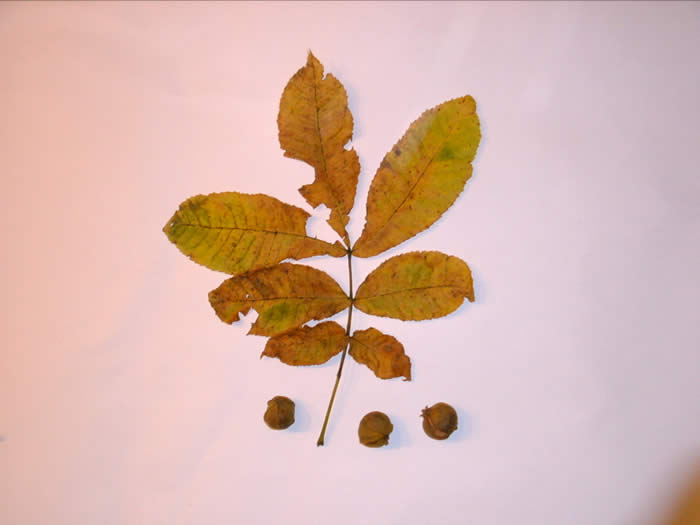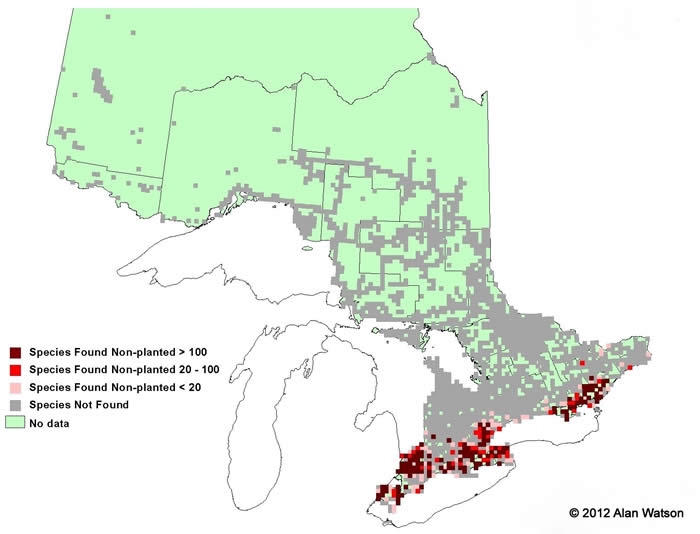shagbark hickory
shagbark hickory - Carya ovata
Although it produces smaller nuts than the closely-related shellbark hickory, the shagbark hickory is Ontario’s most important source of edible hickory nuts. It is much more common than the shellbark hickory, and Ontario has a rich cultural past involving the use of shagbark hickory. The sap has been used to make syrup, and the wood makes an excellent long-burning fuelwood. The nuts are a staple in some Indigenous populations, used to make many types of food. Today, shagbark hickory wood is still valued for its many uses, including tool construction and for making sports equipment such as skis. Many animals rely on the sweet, high-fat nuts, such as squirrels.

The mature bark is shaggy and dark, with long shreds or strips that are easily peeled. Photo by Chris Earley.

The leaves of the shagbark hickory can be distinguished from the shellbark because they are smaller, with usually only 5 leaflets (where shellbark often has 7-9). Photo by Sean Fox.

The sweet nuts are similar in taste and use to the pecan, and are often used in baked goods. Photo by Sean Fox.

Ontario Tree Atlas map of non-planted Shagbark Hickory. 1995-1999.
References
Farrar, J.L.. 1995. Trees in Canada. Fitzhenry & Whiteside Ltd. Toronto. ON. 504 pp.
Kershaw, L. 2001. Trees in Ontario: Including tall shrubs. Lone Pine Publishing. Edmonton. AB. 240 pp
Muma, W. 2011. Ontario Trees and Shrubs. [Online] Available: www.ontariotrees.com
OMNR, 2011. Ontario Ministry of Natural Resources: Ontario Tree Atlas. [Online] Available: http://www.mnr.gov.on.ca/en/Business/ClimateChange/2ColumnSubPage/267027.html
OMNR, 2008. Ontario’s Biodiversity: Species at Risk.